Today, we’re starting our dive into the fascinating world of emotions and how they can affect our stress and cortisol levels in harmful and helpful ways. While there will be many overlapping themes and solutions to what we’ve already covered in the blog series on our spiritual wellness, this next series of posts will focus a lot on emotions, what we know about them, what they are and how we can manage our emotions in a way that facilitates a lowering of stress and cortisol levels.
Emotions are like little (or big) reactions that pop up when something happens to us or around us. Sometimes, we can’t really figure out why we feel a certain way, but in general, we can group emotions into two categories: pleasant ones when good things happen and not-so-pleasant ones when something we don’t like takes place. We all enjoy feelings like joy, hope, and love, but let’s be real; the negative ones are a bit tougher to deal with. But here’s the silver lining: emotions are trying to tell us something, and it’s an opportunity for growth!
You might have heard of primary emotions like happy, sad, angry, afraid, surprised, disgust, and shame. They’re universally experienced by humans all around the world. Psychologist Paul Ekman suggested this list back in 1972. Then in the 1980s, Robert Plutchik introduced the “wheel of emotions,” showing how different emotions can mix together like colors on an artist’s palette, and Ekman expanded his list to include other basics like embarrassment, excitement, contempt, pride, and more.
For comparison, here are some (probably not exhaustive) emotions the Bible mentions:
- Anger
- Fear
- Anxiety
- Sorrow
- Gladness
- Joy
- Compassion
- Contentment
- Relief
- Despair
- Doubt
- Grief
- Anguish
- Amazement
- Love
- Hate
- Confusion
- Longing
- Affection
- Peace
What is interesting is that a distinction has been made between emotions and feelings we experience. The theory goes that the feelings are informed by the stories we tell ourselves about what’s happening. So, if someone feels angry, it could be because they think someone ignored them deliberately, leading to feelings like annoyance or resentment. Another person might feel angry for a completely different reason based on their perception that the person did not really listen. It’s good to be aware that we all create stories in our heads about what’s going on even though those stories take place mostly on the subconscious level until we begin practicing awareness.
Emotions are powerful drivers that influence our decisions and actions. Our choices are often shaped by the fear of pain, and this fear can lead us down different paths. For example, some might avoid exercise and healthy eating due to the fear of physical discomfort or deprivation, while others might take care of their health because they fear being alone and unable to get help if they fall sick. Fear becomes the engine that powers our choices.
A teacher of mine said this about emotions: Imagine emotions are like kids. You can’t let them drive the car, but you can’t stuff them in the trunk either. I have done both of those things with my emotions, have you? So, in the upcoming posts, I’ll share some pointers on how to install a car seat and ways to get those emotions cooperating, ensuring a smoother and more pleasant ride.
Being aware of our emotions and being present with how our minds and bodies respond to situations enables us to manage stress better. It leads to improved emotional regulation, resilience, and lower levels of anxiety. Emotions, feelings, and moods can be complex and subjective, but understanding them is a priceless skill that helps us navigate through life’s ups and downs. We will spend time later on how to understand our emotions, but first we need to get more intentional at being aware of them and how they show up in us. While this may feel like it is slowing you down, I want to encourage you that this is an investment in your emotional health. It’s like discovering a new language for our emotional world! So, let’s get to know our emotional landscape better before we bring in the landscaping team to work on it.
Some of the benefits of doing this work are:
- People who are good at acknowledging and regulating their emotions tend to do well in life, have healthier relationships, and cope better with challenges because they can avoid many of the regrettable actions taken if driven by un-managed emotions.
- Emotions act as our internal compass, helping us understand the reasons behind our emotions and old wounds that have been untended.
- Emotions can greatly affect our moods and behaviors. Being able to recognize what we’re feeling puts us in the driver’s seat where we can control our thoughts and reframe negative ones, shifting our mindset and become more balanced and peaceful.
- By understanding our emotions, managing them, and communicating effectively with others, we can also help those around us by supporting them when they’re feeling down and responding appropriately to their emotions.
As you begin to build more awareness to your emotional world, here are some things for you to look for. Pay attention to your subjective experience. Notice the different shades of the basic emotions, like anger. Is it mild annoyance or full-on rage? Be aware of how your body reacts to emotions. Your heart racing with fear or stomach churning with anxiety? That’s your body’s way of telling you something. Also, take note of how you express emotions. Do you get short with people when angry, or do you prefer to have an internal boxing match? We all express emotions in our unique ways.
And remember the basic emotions we mentioned earlier? They are the ones experienced universally, like happiness, sadness, fear, disgust, anger, and surprise. Sometimes, we might have mixed feelings, like feeling frustrated because we’re sad. Those are called secondary emotions. It can get a bit confusing, but don’t get hung up on labels and theories. Just pay attention to what you can notice in yourself!
Depending on who you ask, some people believe that the emotion we show on the surface might actually be masking a more vulnerable emotion underneath. It can get a bit confusing, though. For example, it’s often said that anger can cover up sadness or pain. While that can be true in some cases, it’s important to remember that anger over injustice is a valid and legitimate emotion on its own, without needing to search for hidden emotions.
This process of exploring our emotions and being aware of them helps us understand if we’re experiencing more than one emotion at a time. Sometimes, there might be quieter emotions lingering beneath the surface that also deserve acknowledgment. It’s a journey of self-awareness, discovering the layers of emotions within ourselves. Try not to let labels distract you. What really matters is just you actually paying attention to all the things you can notice and observe.
To help you practice awareness, here are some Feeling Wheels. They can be useful for identifying complex emotions. You don’t have to feel restricted by these; they’re simply tools to help you start giving language to your emotional world, just like learning the alphabet.
This first wheel simply displays various emotions, starting with the basics at the center and branching out to more nuanced versions and even more specific words. You can use it in any way that suits you best – as a starting point, a reference sheet, or any other creative approach. Here’s a method I’ve found useful: I ask myself which emotion from the center feels most accurate to my current state. Initially, I thought it was anger, but as I explored the nuances of emotions, none seemed to resonate. So, I shifted my focus to the outer ring and found that “embarrassed” felt more fitting to describe what I was feeling. This led me to trace it back to the core emotion of shame. For now, it’s enough to practice this exercise multiple times a day if it feels helpful. As you try it, you might wonder what exactly you feel ashamed about. By identifying the source, I realized my natural inclination was to hide. Instead, I decided to take a different approach and shared my feelings of shame with trusted friends. Their kind and understanding response helped me feel more normal and supported.
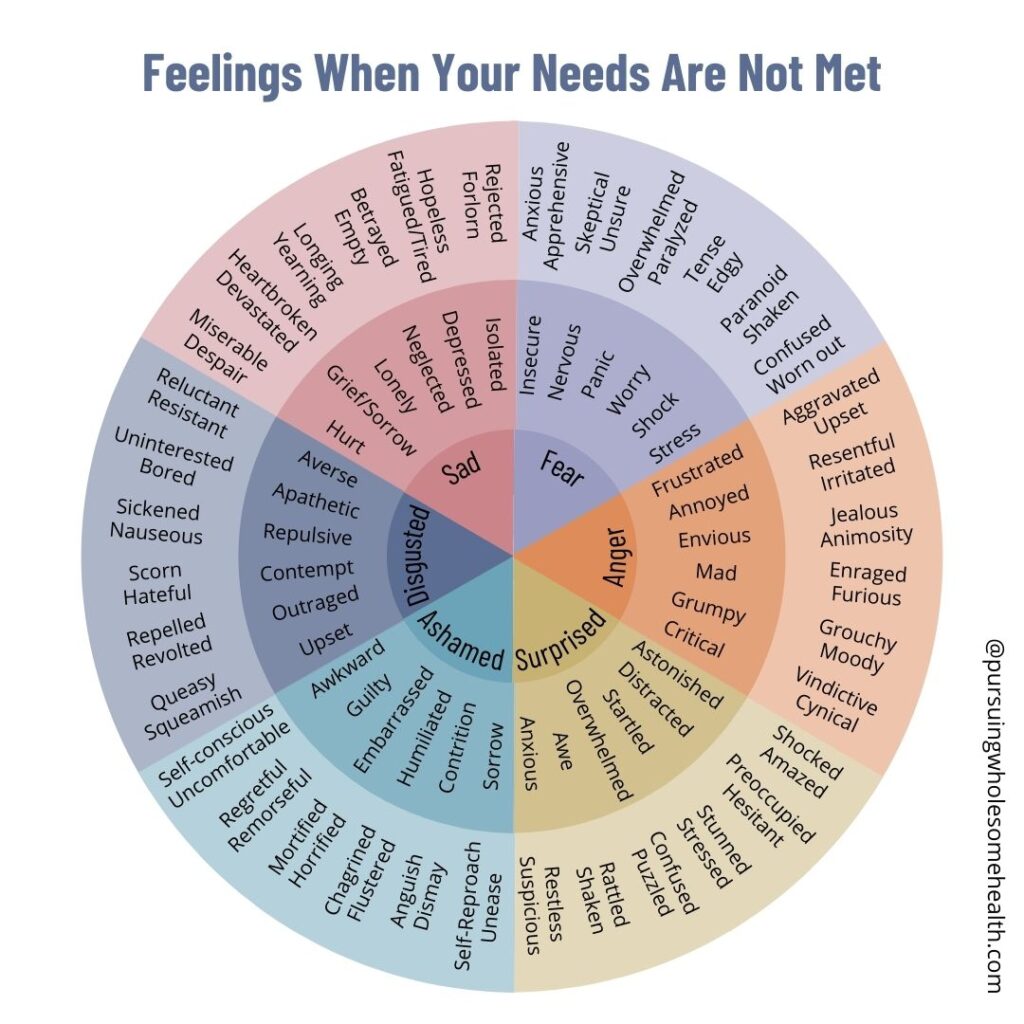
The second wheel is designed for those of you who are more in tune with your body’s sensations. Fascinatingly, researchers have discovered that many emotional experiences actually originate in our bodies before we consciously recognize them. Our emotions and body sensations are intricately connected, creating a powerful communication system. Using an emotion sensation wheel can greatly enhance our understanding and ability to accurately label our feelings, facilitating personal growth and positive changes. If you sense a physical sensation but are unsure of its associated emotion, you can start from the outer circle of the wheel and identify what you’re sensing. Then, work inward to gain a deeper understanding of the underlying emotions. On the other hand, if you feel somewhat disconnected from your body, you can begin by recognizing the emotion you believe is accurate for the moment. Then, take a moment to note any physical sensations that might be present and see if you resonate with them. It’s okay if the sensations listed on the wheel don’t precisely match what you feel; the wheel is not definitive or fixed. It’s about understanding your unique experience and getting to know your individuality better. You can even embark on a personal journey of creating your own wheel, adding words that fit your emotional landscape. I’m giving you a blank copy you can use if you want to give it a try.
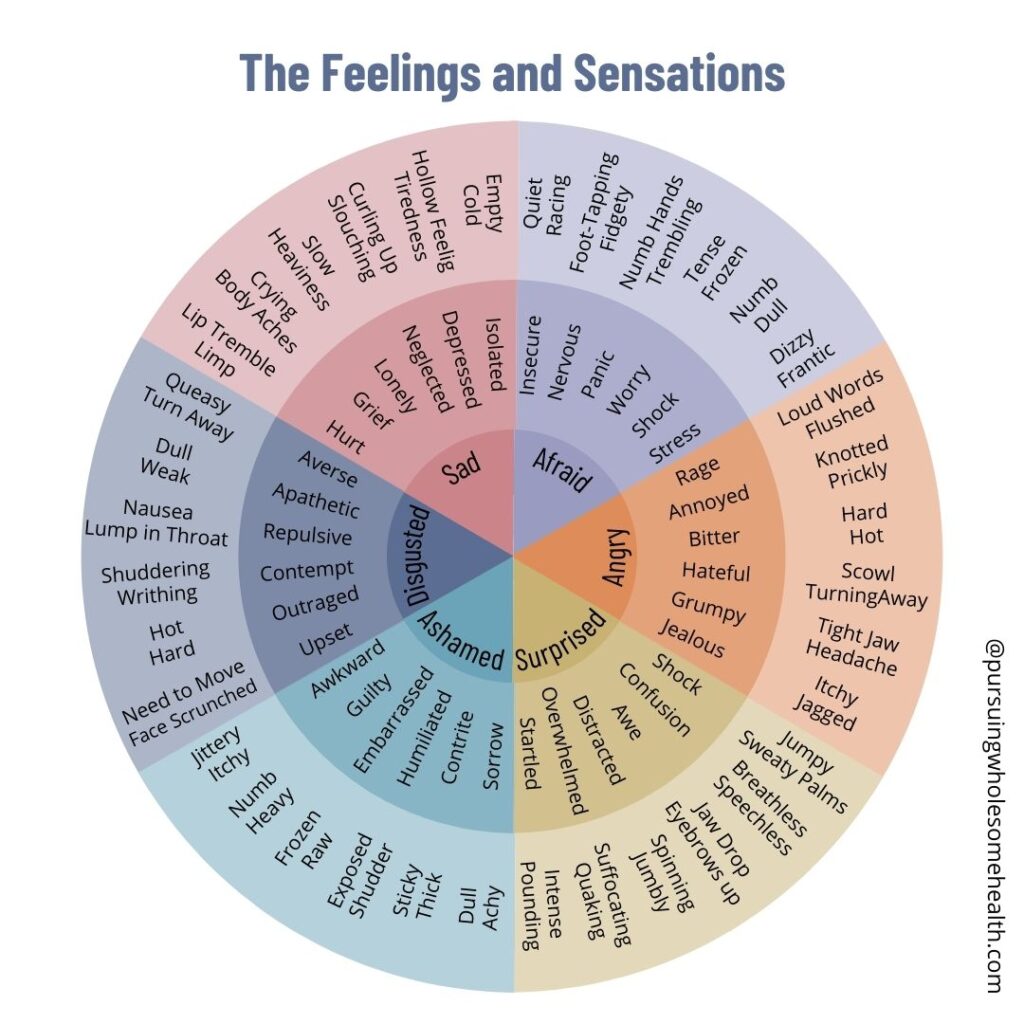
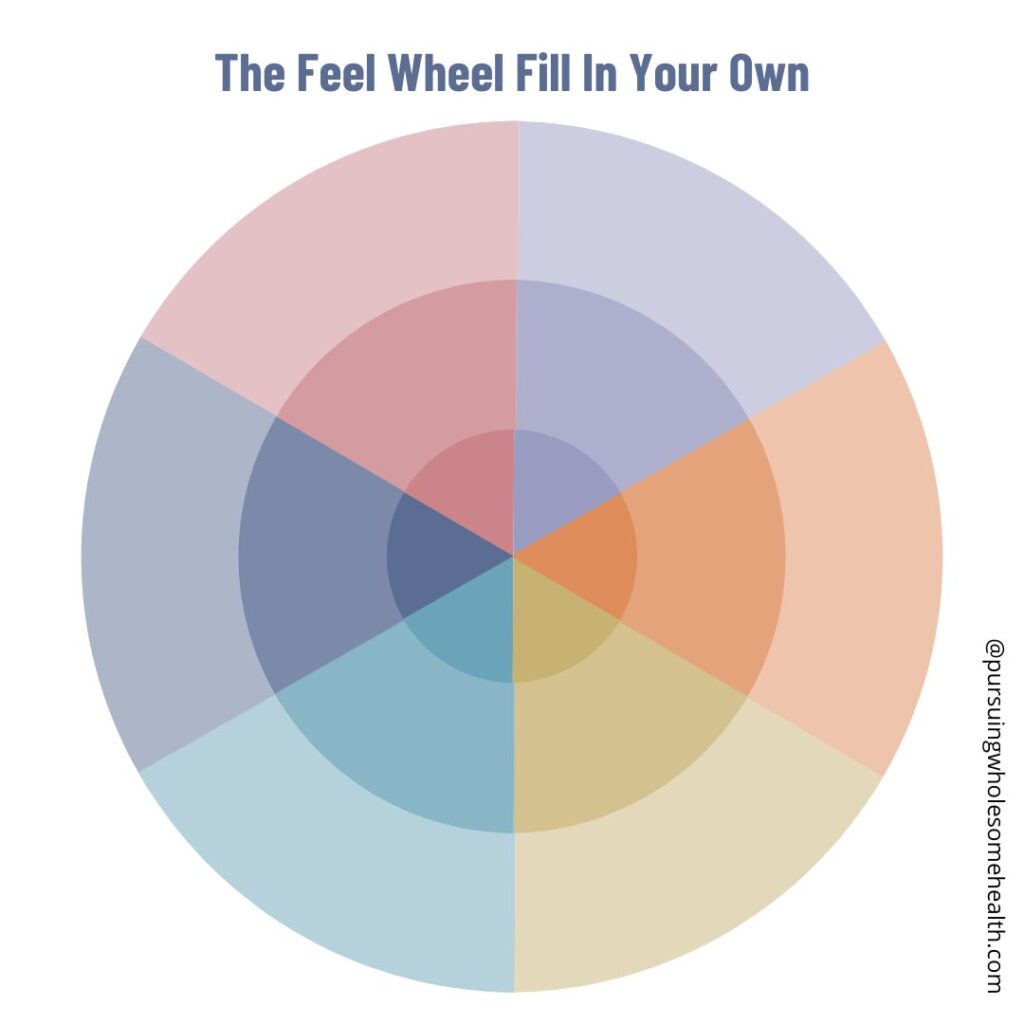
This isn’t just about getting to know yourself better, although that alone is valuable for finding peace and reducing stress. It’s helpful to know that simply naming what you feel, especially those emotions that stress you, can have an intensity-diffusing benefit. While it won’t magically regulate all your emotions, expressing out loud that you feel angry, or using a more nuanced word, can help weaken its grip on you.
Lastly, I encourage you to shift from saying “I am disappointed” to “I feel disappointed.” Remember, you are not defined by your emotions. Emotions are not your identity. You are a precious, dearly loved, and unique individual who experiences emotions. Give it a try and notice how this subtle change can also ease the intensity of your emotions.
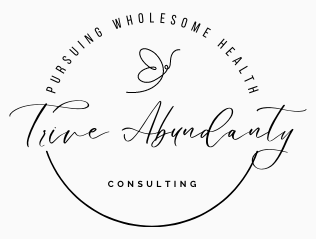






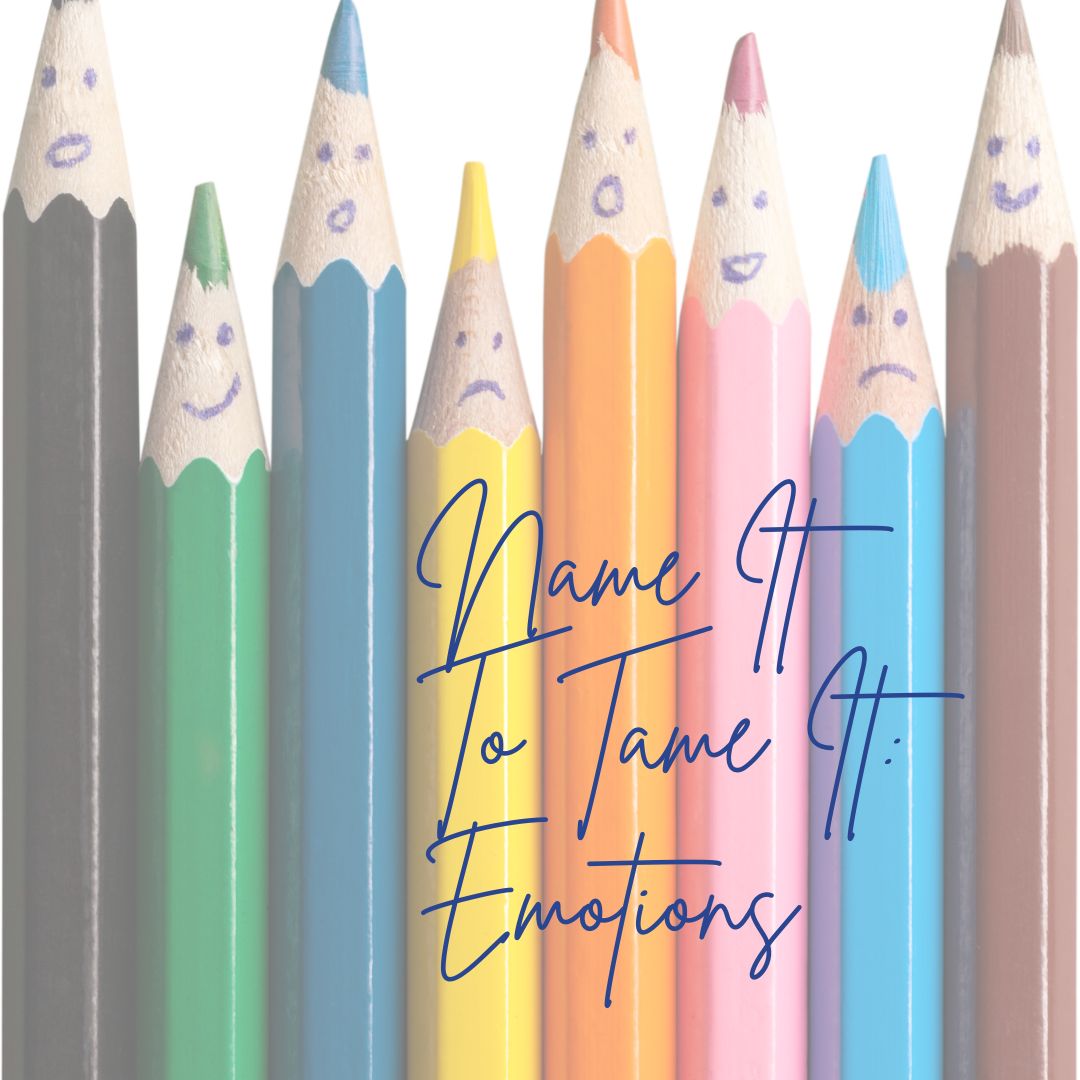
This was so helpful – thank you!
Thanks so much for reading! 💕
Thanks for such a thought provoking and insightful read. Also for the reminder “you are not defined by your emotions. Emotions are not your identity.”
I’m really glad this was a beneficial read for you! 💕
This is really great! We have to be so intentional about our emotional wellness! Thank you for sharing.
Thank you so much for reading and commenting! It’s so good to have you here!